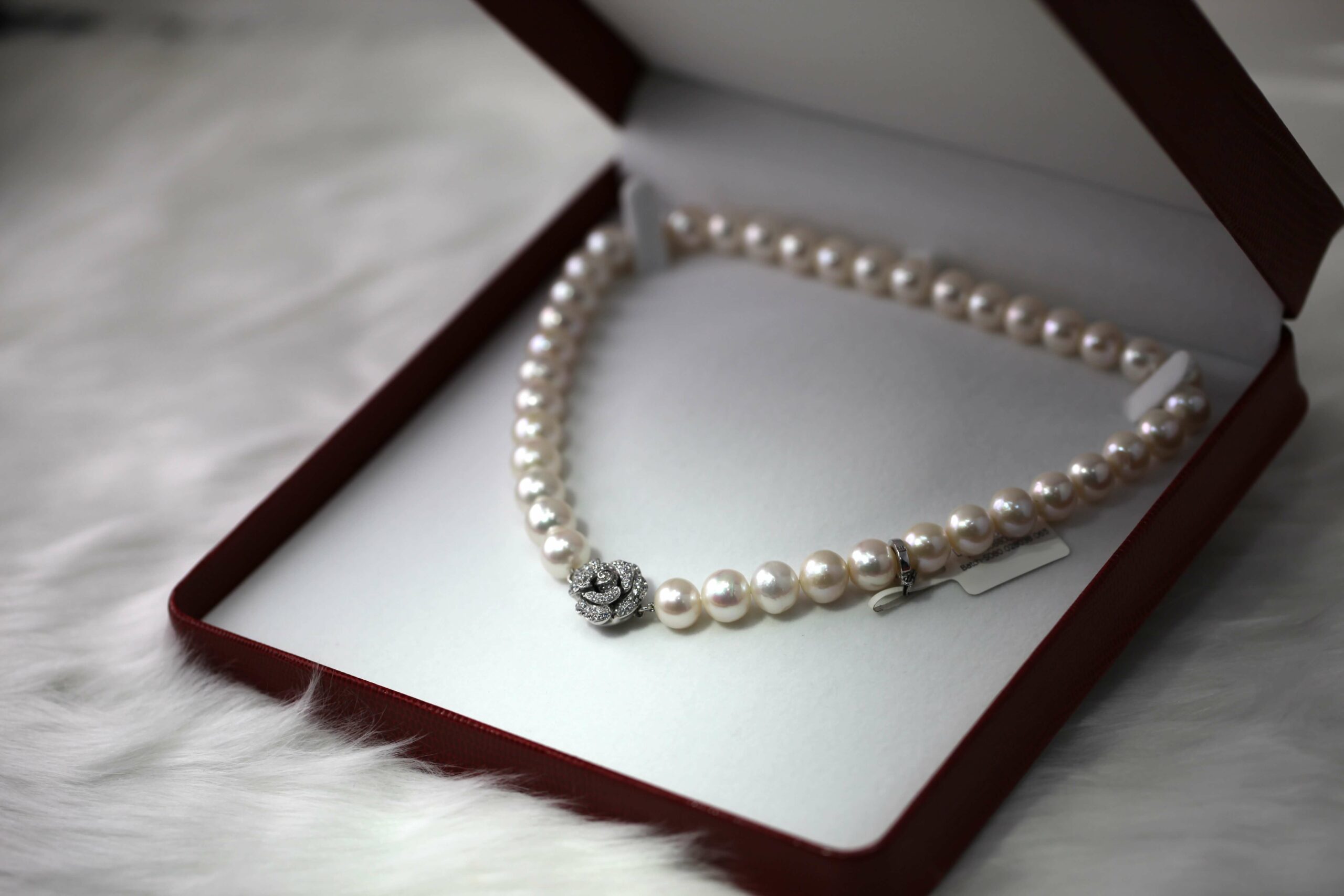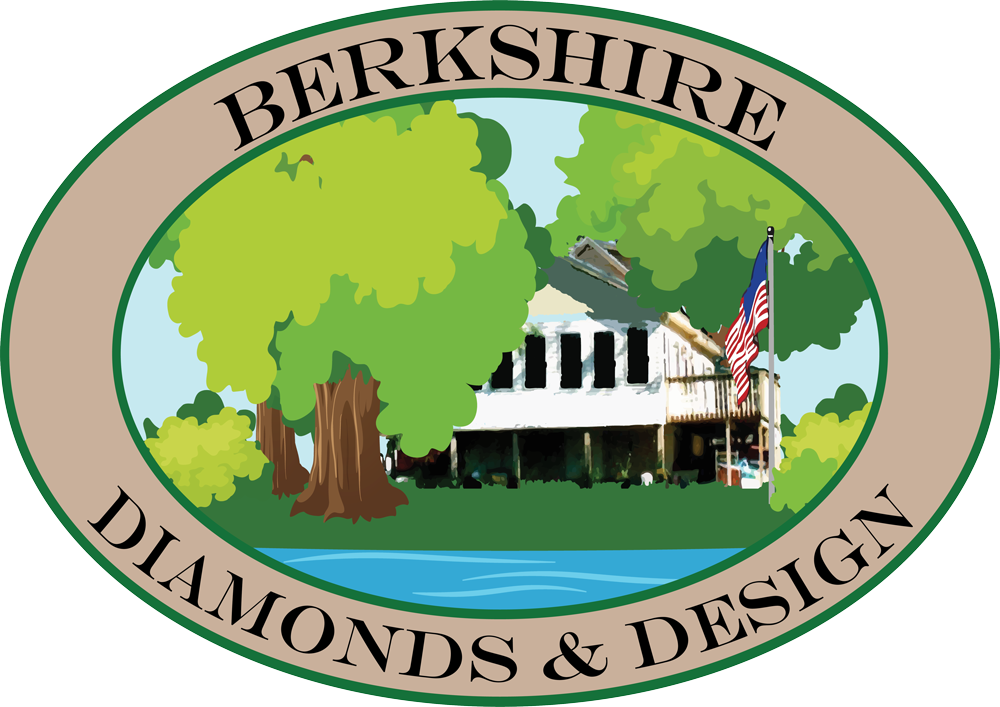
Pearl Education

Use the information below to learn more about the origins of pearls, types of pearls, understand the way pearls are graded, and how to care for pearl jewelry. Pearls have been used in jewelry for thousands of years. Their unique beauty and variances span across the world. Pearls naturally exist in freshwater and saltwater oysters, however, the odds of finding a pearl naturally are very small. This is because a pearl is formed only if a foreign substance (usually a parasite) invades the oyster’s shell and irritates the soft tissue. The oyster forms layers of nacre material around the foreign substance as a way to defend itself from this substance. Over the course of many years, the pearl grows as many layers of nacre are formed. Natural pearls are the rarest and most expensive type of pearl. However, natural pearls do not make for an effective means to produce pearl jewelry as they are usually irregularly shaped and difficult to harvest.
Cultured Pearls
It was the beginning of the 20th century when Japanese researchers discovered a way of purposely and consistently causing oysters to produce pearls. By artificially inserting a foreign substance into the oyster’s mantle, over a period of time a cultured pearl is created. In 1916, Kokichi Mikimoto perfected the process and patented his results. Today similar techniques are used to consistently produce a wide variety of cultured pearls in oysters and mussels. The size and shape of a pearl can also be pre-determined. This made cultured pearls viable for producing an abundance and wide variety of cost-effective and beautiful pearl jewelry.
Akoya Pearls are farmed primarily in China and Japan and cultured in the Akoya oyster. These oysters are the smallest of the group and generally produce pearl sizes in the range of 3mm to 11mm. Akoya Pearls are known for their high luster and slight pink or yellow hue.
Tahitian Pearls are farmed in the French Polynesian and around Tahiti by the “black-lipped” oyster. These oysters can grow in excess of one foot in length and tend to produce larger sized pearls up to 14mm in diameter. Tahitian Pearls are silver or charcoal in color usually with a slight green tint. Tahitian Pearls that are black are very rare and thus more expensive.
South Sea Pearls are cultured in two mollusk varieties: “silver-lipped” and “gold-lipped” oysters (Pinctada maxima). They are farmed in their natural water habitat around Australia, the Philippines, Indonesia, and surrounding areas. These large oysters produce pearls in the range of 9mm to 20mm and are among the largest pearls. Color varieties are typically white, silver, or golden with a satin luster.
Freshwater Pearls are cultured in mussels that live in non-saline water environments, such as lakes, rivers, and ponds. Most Freshwater pearls are farmed in China and it has been the country’s tradition since recorded over 4000 years ago. Freshwater Pearls are made of pure nacre thus tend to be more durable and less prone to chipping than their salt-water counterparts. These pearls usually range in size from 6mm to 12mm and come in a variety of colors and shapes and tend to have slightly less luster and usually less expensive than salt-water pearls.
Pearl Grading
The Pearl Industry has not standardized a universal grading system however most jewelers do follow commonly known grading methods. Because of the huge variances in pearl sizes, shapes, colors, luster, and surface blemishes, one can understand just how daunting such a task might be. Two grading system which is commonly used amongst most pearl jewelers is the A-AAA and A-D (or Tahitian) Pearl Grading system. The system Eye for Gems follows to grade its pearls is the A-AAA Pearl Grading system.
In the A-AAA Grading system, pearls are graded from AAA, being the highest grade to A, being the lowest grade pearl. The table below explains the various grades and characteristics of a pearl associated with it:
| Pearl Grade | Characteristics |
| AAA | Spherical in shape, even in color and luster, flawless, and `high level of luster and iridescence. |
| AA+ | High luster and iridescence and 95% of the surface are flawless. Most AA+ pearls are frequently used in necklaces and bracelets. |
| AA | A moderate degree of luster and iridescence, lack color uniformity with slight blemishes. Most AA grade pearls are drilled on the blemish to hide the flaw. |
| A | Less luster and iridescence than AA pearls. The naked eye might be able to detect flaws and the shape will be slightly irregular. |
| BB | Chalky white, less luster, and iridescence. They will also tend to have blemishes. BB is known as commercial grade. |
The thickness of the nacre of a pearl also determines the quality of the pearl. Freshwater Pearls are almost purely made of layers of nacre whereas salt-water pearls have its outer layers made of nacre. This is because the foreign substance injected into salt-water oysters isn’t necessarily nacre based.


Pearl Care
Pearls are much softer than other hard gemstones and can be easily scratched and damaged by metals or chemicals. Because they contain organic material and water, pearls can also crack if exposed to excessive dryness. A good rule is to put your pearls on after you are ready to go, this way the sprays, perfumes, and lotions will not be exposed to your jewelry. When cared for properly, pearls can last a lifetime.
Below is a list of Do and Don’ts for taking care of your pearls:
- Store your pearls in a soft cloth sack or linen cloth. Make sure to keep them separate from other gemstones or anything that could scratch or damage the pearls.
- Never store your pearls in any type of plastic bag. Plastic can emit a chemical that will cause the surface of the pearl to deteriorate.
- Never store your pearls in a very dry room or in a safe deposit box for a long time. Your Pearls need a little moisture like your skin so that they will not dry out.
- Never clean your pearls with an ultrasonic cleaner, gently wipe them with a soft damp cloth. This will help to remove any build-up on the pearls. Make sure you do not use anything abrasive as these may damage your pearls. Periodically you can wash your pearls the best way to help remove harmful build-ups. Wash your pearls in soapy water using a mild liquid soap (not detergent). Be sure to rinse well and place it on a soft cloth.
- Never use toothbrushes, scouring pads, or any type of abrasive material to clean your pearls.
- Be sure to remove your pearls before doing any type of exercise or housework. Do not wear your pearls in swimming pools with chlorinated water.

